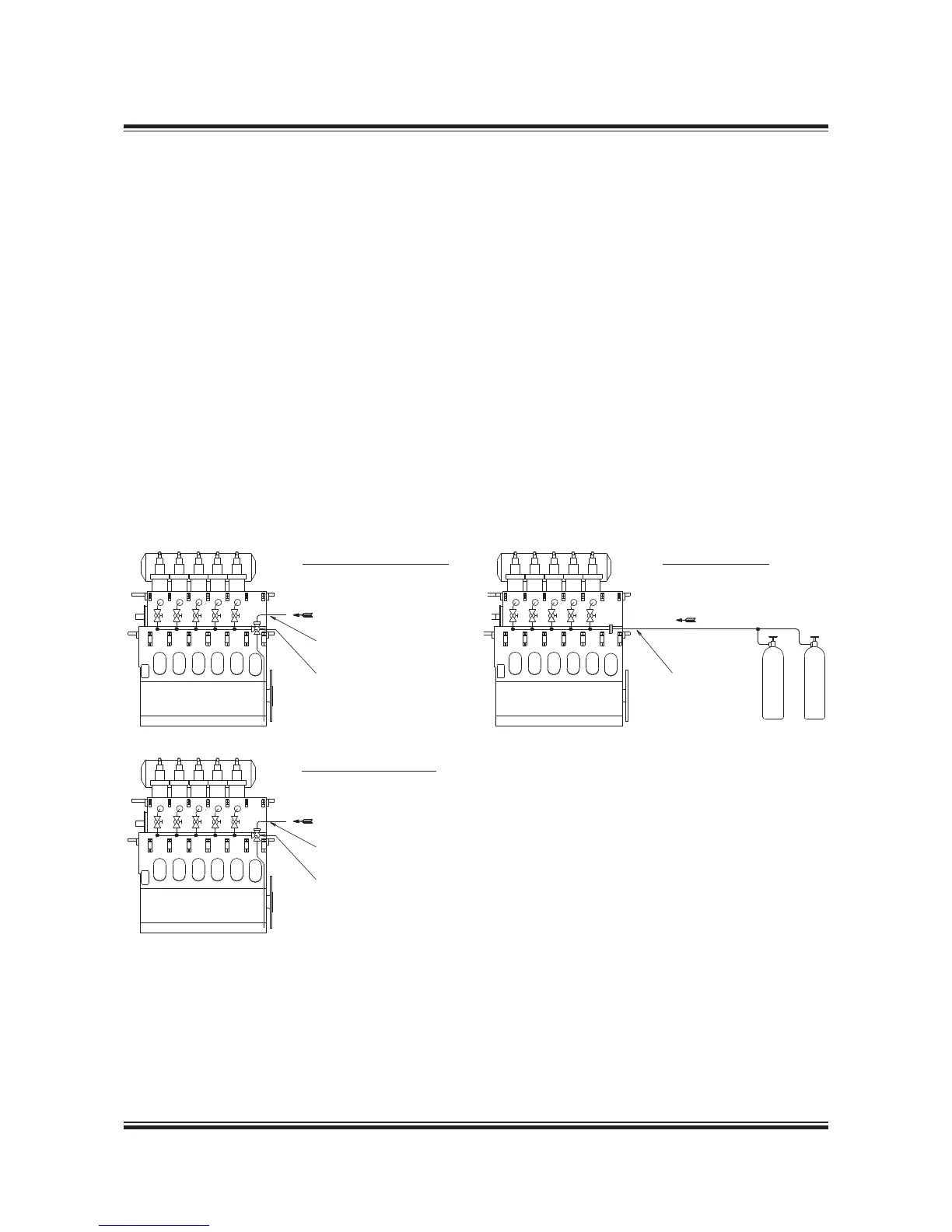MAN B&W 14.07
Page 1 of 2
MAN Diesel
MMAN B&W S65MC-C, S65MEC/ME-GI 198 48 190.6
Fire Extinguishing System for Scavenge Air Space
Fire in the scavenge air space can be extinguished
by steam, this being the basic solution, or, option-
ally, by water mist or CO
2
.
The external system, pipe and flange connections
are shown in Fig. 14.07.01 and the piping fitted
onto the engine in Fig. 14.07.02.
In the Extent of Delivery, the fire extinguishing
system for scavenge air space is selected by the
fire extinguishing agent:
• basic solution: 4 55 140 Steam
• option: 4 55 142 Water mist
• option: 4 55 143 CO
2
The key specifications of the fire extinguishing
agents are:
Steam fire extinguishing for scavenge air space
Steam test pressure: 15 bar
Steam quantity, approx.: 3.8 kg/cyl.
Water mist fire extinguishing for scavenge air space
Freshwater test pressure: 10 bar
Freshwater quantity, approx.: 3.5 kg/cyl.
CO
2
fire extinguishing for scavenge air space
CO
2
test pressure: 150 bar
CO
2
quantity, approx.: 7.5 kg/cyl.
The letters refer to list of ‘Counterflanges’
079 61 029.3.0a
AT
AT
AT
Basic solution: Steam extinguishing
Steam pressure: 3-10 bar
DN 40 mm
Normal position
open to bilge
Normal position
open to bilge
Option: Water mist extinguishing
Fresh water presssure: min. 3.5 bar
DN 40 mm
Option: CO
2
extinguishing
CO
2
test pressure: 150 bar
DN 20 mm
CO
2
bottles
CO
2
At least two bottles ought to be installed.
In most cases, one bottle should be sufficient
to extinguish fire in three cylilnders, while two
or more bottles would be required to extinguish
fire in all cylinders.
To prevent the fire from spreading to the next
cylinder(s), the ball-valve of the neighbouring
cylinder(s) should be opened in the event of
fire in one cylinder.
Fig. 14.07.01: Fire extinguishing system for scavenge air space

